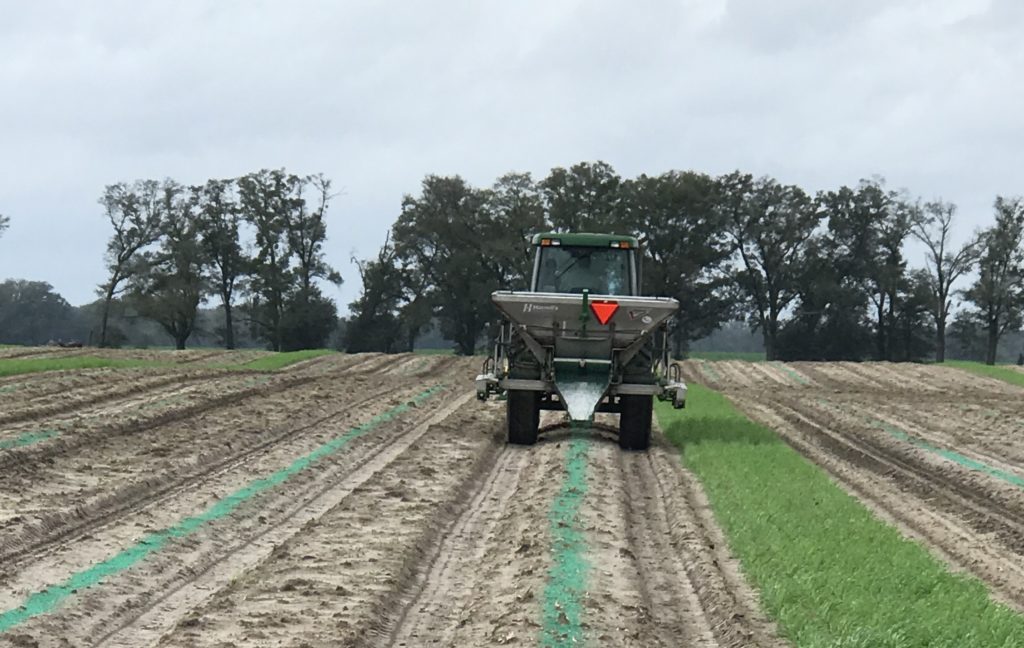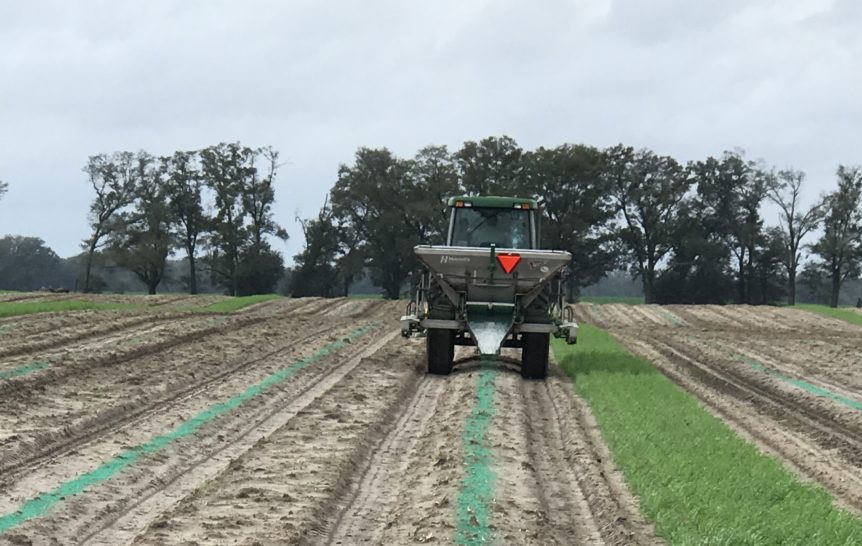
Photo courtesy of UF/IFAS
By Clint Thompson
Imagine a scenario for North Florida watermelon producers where leaching of nitrogen fertilizer is greatly reduced, and labor expenses are cut significantly. University of Florida Institute of Food and Agricultural Sciences (UF/IFAS) research is proving it’s not just a dream but a potential reality.
Bob Hochmuth, UF/IFAS regional specialized Extension agent in Live Oak, is one of the researchers studying the impact of controlled-release fertilizers. Research has been conducted on small plots and on-farm demonstration sites with funding from the Suwannee River Water Management District and the Florida Department of Agriculture and Consumer Services.
Coatings at Work
The research expanded to watermelon farms in spring 2023 with the initiative of helping producers reduce their nitrogen rates by using fertilizer granules surrounded by polymer-coated materials.
This is a technological advancement that could be a potential game-changing option for watermelon producers who want to be more efficient and remain sustainable. Hochmuth describes the process of how this fertilizer works.
“As it’s put in the soil and temperatures increase, the urea that’s in the granule begins to leak out of the polymer coating. The higher the temperature, the more that is released,” Hochmuth says. “Let’s say we put one layer of polymer on it and 80% of that material is going to be released in 45 days, but I want it to have fertilizer released at 60 to 90 days. That same polymer coating with one layer, we could add a second layer, and that maybe will last 60 days. But if I want it to last longer than that, we might add a third layer to it.”
According to Hochmuth, fertilizer manufacturers can add the needed layers of polymer coating to match up with the crop needs. This can be aligned with watermelon needs in the season. Nitrogen is extremely susceptible to leaching out within the first four to five weeks of a watermelon production season in the Suwannee Valley region. This is due to a lack of root-system development early in the season, along with deep sandy soils that are prevalent in the region.
Controlled-release fertilizer reduces leaching because the nitrogen is released over a period of time. It is present when growers need it the most at different points in the season.
“Traditionally in watermelons, we’re putting soluble fertilizer in the bed,” says Hochmuth. “But soluble fertilizer is very difficult to manage. If we get leaching rain events or we over-irrigate trying to keep those beds wet early in the season, we cannot control the nitrogen leaching under conventional fertilizer sources. That’s the challenge that we have traditionally had. If we put a controlled-release polymer-coated material in the bed and we get a leaching rain event or we over-irrigate … it’s not going to have a negative impact because the majority of that nitrogen fertilizer is still protected in the polymer.”
Technology Assist
Computer programs have been developed to suit certain cropping systems. A specific grower may want the nitrogen released at a different rate than a fellow farmer in a nearby county. The fertilizer can be developed to match their needs. Other factors like weather and when plastic is laid will impact the manufacturers developing the fertilizer for the producers.
“There’s a lot of technology that they can use to try to match as perfectly as possible the release of the nitrogen out of that polymer coating to match the crop needs,” says Hochmuth. “Early in the season, we only need a small amount of nitrogen. And then at some point, maybe 40 days into the crop, we’ll need a lot more to be released. There are computer programs that help them put together the proper polymer coating and the proper batch to meet the needs of the crop as best they can.”
While the research has shown that traditional fertilizer applications and controlled-release fertilizer produce similar yields, the benefits could outweigh the extra $200 to $250 per acre that growers must pay for this technological advancement to be implemented on their farms.
“You apply the controlled-release fertilizer once at the beginning of the season if you choose to do it that way and you don’t have much, if any, fertigation to worry about during the season,” Hochmuth says. “You don’t have the labor of people going in and out of the field turning vials. There are some cost savings, especially in labor, that the farmer does not have to pay if they convert to a controlled-release program.”
Of the seven growers that utilized a controlled-release fertilizer program for UF/IFAS research, some have expressed a desire to continue using it in the future to improve the efficiency of nitrogen applications.










